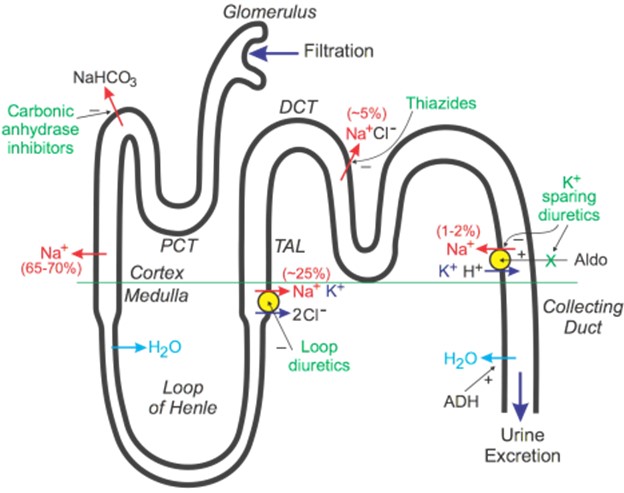A nurse is caring for a client who is taking furosemide. For which of the following adverse effects should the nurse monitor?
Hypervolemia
Hypertension
Hypoglycemia
Hypokalemia
The Correct Answer is D
Furosemide is a loop diuretic that helps the body get rid of excess fluid by increasing urine output. However, it also promotes the loss of potassium in the urine, leading to a potential decrease in the body's potassium levels.

Nursing Test Bank
Naxlex Comprehensive Predictor Exams
Related Questions
Correct Answer is B
Explanation
After administering lactulose to a client with cirrhosis, the nurse should monitor for the adverse effects of diarrhea. Lactulose is a laxative commonly used in the treatment of hepatic encephalopathy, which can occur in individuals with cirrhosis. One of the intended effects of lactulose is to promote bowel movements and reduce the absorption of ammonia in the gut, thus helping to manage hepatic encephalopathy.
While lactulose can cause adverse effects such as diarrhea, it is not typically associated with peripheral edema. Peripheral edema is often seen in cirrhosis due to fluid retention caused by liver dysfunction.
Dry mouth and headache are less commonly associated with lactulose use and are not typically the primary adverse effects to monitor for in this scenario.

Correct Answer is B
Explanation
Cimetidine is a medication known as a histamine H2 receptor antagonist, commonly used in the treatment of peptic ulcer disease. It works by reducing the production of stomach acid. When teaching a client about cimetidine, it is important to inform them about the timing of taking other medications, specifically antacids.
Antacids, which are used to neutralize stomach acid, can interfere with the absorption of cimetidine if taken simultaneously. Therefore, it is generally recommended to wait at least 1 hour after taking cimetidine before taking an antacid. This allows sufficient time for the cimetidine to be absorbed and start working effectively before neutralizing stomach acid with an antacid.

Whether you are a student looking to ace your exams or a practicing nurse seeking to enhance your expertise , our nursing education contents will empower you with the confidence and competence to make a difference in the lives of patients and become a respected leader in the healthcare field.
Visit Naxlex, invest in your future and unlock endless possibilities with our unparalleled nursing education contents today
Report Wrong Answer on the Current Question
Do you disagree with the answer? If yes, what is your expected answer? Explain.
Kindly be descriptive with the issue you are facing.
